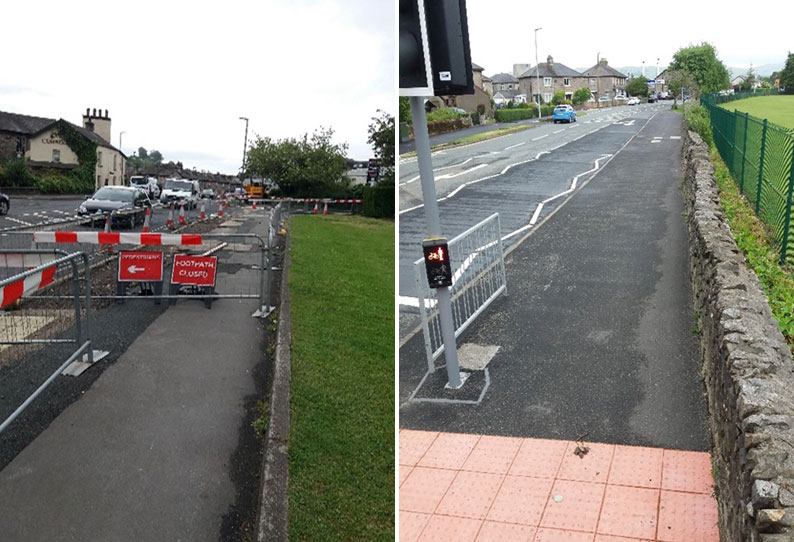Sullart Street, Cockermouth

What We Delivered at Sullart Street, Cockermouth
Thomas Armstrong (Construction) Ltd was appointed to undertake public realm and highways improvements along Sullart Street in Cockermouth.
This extensive scheme included full reconstruction of the existing carriageway, drainage improvements, kerbing, paving, and resurfacing. The project was delivered within a live town centre environment, requiring phased traffic and pedestrian management to minimise disruption to local residents and businesses.
Coordination with utility companies and close communication with the local authority and stakeholders ensured the successful delivery of the works, which have significantly improved the appearance, safety and usability of this key road corridor.
Works Included:
- Reconstruction of existing carriageway
- Upgraded drainage infrastructure and new gullies
- Kerb replacements and new footway construction
- Tarmac surfacing and road markings
- Installation of new traffic signage and street lighting
- Paving, edging and minor landscaping works
- Traffic and pedestrian management throughout
- Coordination with utility providers for service diversions
Project Achievements:
- Delivered safely in a live, high-traffic town centre setting
- Improved vehicle and pedestrian access along a key local route
- Enhanced safety, visibility, and drainage performance
- Positive stakeholder engagement and minimal disruption to surrounding area
- Contributed to wider town centre enhancement programme
Explore More of Our Work
Discover other projects we’ve successfully delivered across the region — from commercial builds and civil engineering schemes to bespoke joinery and residential developments.




